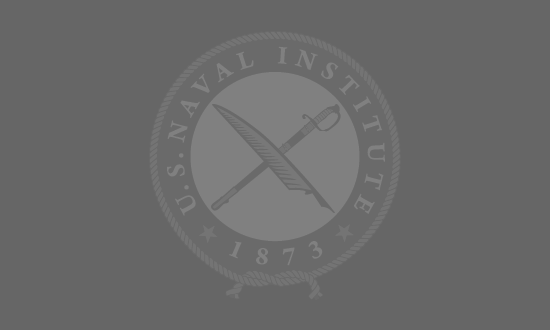The challenges of storytelling become wildly complex when done so in support of military operations. Hence, every U.S. military service has a cadre of public affairs officers (PAOs) charged to do just this on behalf of their commands. The PAO is the commander’s principal spokesperson and is charged with providing timely, truthful information to the public and the news media.
PAOs remain bound by laws that prevent them from misrepresenting the truth to domestic audiences. A common adage is, “Public affairs cannot lie to the American people.” PAOs who misrepresent the truth erode the American people’s trust in the U.S. military, as seen in the fallout of such misrepresentation from the cases of Private First Class Jessica Lynch and Corporal Pat Tillman.
But while PAOs cannot lie or even shade the truth for their commanders, they still must choose how much information to release, and how to frame it. They must manage the narrative, competing against other narratives in an information environment in which facts appear increasingly negotiable.
In a world in which the information environment becomes increasingly interdependent, even inseparable from the operational environment, the PAO’s role becomes more complex. Everyone is watching, the internet never forgets, and it is no longer possible to even entertain the fantasy that audiences can be artificially stove-piped; a message intended for a domestic audience will be seen by international audiences, including allies, partners, and adversaries.
Consequently, an official PA product designed to tell only a service’s good news to the American people will be consumed by shadow audiences and have an influencing effect. More confounding, any PA product viewed by the American public will inherently influence them as well; PA and information operations, while differing in targets, intent, and truthfulness, are not necessarily inseparable.
Joint doctrine on PA is explicit in discussing this, noting that PA is authorized to influence adversaries and directly contributes to deterrence. Moreover, information operations joint doctrine calls for a PA representative to be a part of the information operations cell, ensuring that PA and information operations synchronize and coordinate. However, SECNAV Instruction 5720.44C, Public Affairs, is far more restrained and conservative in its approach to this subject and instead is laden with warnings against inappropriately influencing domestic audiences. As presented, naval PA is rarely proactive, but is largely reactive.
This disparity risks communicating to naval PAOs who coordination with information operations is not permitted. Recent professional discussions within the PA community reveal that many PAOs, even field grade officers, do not see a relationship between PA and information operations. Rather, they see the PA lane as strictly defined by that of the primary spokesperson and coordinator of key leader and community engagement.1
Yet, even this approach ignores airbrushing of PA products to have intended effects. PAOs do not simply launch unfiltered information to their audiences—they choose the stories that will be told and tailor the narrative to fit pre-approved themes, messages, and talking points.
The only way PAOs can avoid this dilemma is to tell no stories at all.
Threading the Needle
Given this professional quandary, commanders and PAOs may seek to reduce risk by minimizing their interaction in the information environment. There are advantages to this approach, as it minimizes exposure and subsequently minimizes risk. Instances of command-issued tweets or Facebook posts that were poorly executed or poorly received give commanders and PAOs pause about a more assertive engagement with the public.
But this safe option takes PAOs out of the fight that is constantly waged in the information environment and cedes the initiative in the battle for the narrative to U.S. adversaries. Moreover, it flies directly in the face of the PA planning implications outlined in joint doctrine by ignoring the actions of the adversary in the information environment. U.S. enemies are maneuvering in the information environment and tirelessly attempting to erode U.S. military credibility through carefully crafted narratives. As noted in Joint Publication 3-61, Public Affairs, “Outlandish accusations, which PA practitioners have conventionally ignored rather than helped sustain with a public response, can now often provide their own oxygen and must be addressed.” How will the Sea Services respond?
Commanders and the PAOs who support them must be willing to aggressively leverage PA within the information environment, allowing them to gain and maintain the initiative in the battle for the narrative. Rather than withdrawing from their relationship from information operations, this doctrinally recognized interdependency must be embraced to allow PA and information operations to coordinate and synchronize their messaging, while avoiding narrative fratricide.
Operationalizing Public Affairs
Recent PA developments in the Marine Corps offer the Department of the Navy a ready model by which to synchronize and coordinate PA and information operations. The Marine Air Ground Task Force (MAGTF) Information Environment Concept of Employment (CoE) is an evolving, but comprehensive approach to fighting in and through the information environment and seeks to holistically incorporate information-related capabilities into MAGTF operations. Notably, two of the information environment functions discussed are “Inform Domestic and International Audiences” and “Influence Foreign Target Audiences.” The associated tasks and staff coordination allow the PA section to facilitate communication with domestic, international, and adversary audiences. This indicates a necessary coordinating relationship with information operations. In short, PA has a direct role in contesting the adversary’s influence.
What might this look like in application? In operational plans and combat operations, this will include messaging preauthorized for release to beat the adversary to the punch and get the U.S. story out first, amplify it on social media, and facilitate its legitimization through amplification by more traditional media outlets. As situations change, PA personnel will rapidly develop new messages in accordance with approved themes and release them to suppress and counter enemy propaganda before it is released. Further, PA must ensure it has representation in the information operations cell to make certain messaging is not contradictory. Such approaches have been used to great effect in the joint environment, supporting Operation Inherent Resolve.
Such principles also are applicable during day-to-day operations, giving commanders the ability to compete in the information environment. The official Twitter account of 1st Marine Aircraft Wing sets that standard. It is active, engaged, and supports a consistent narrative of U.S. military readiness in the Indo-Pacific region. Take one of its tweets from 22 January 2021: Supported by appropriate imagery, it states, “Under the Hurc! U.S. Army paratroopers assigned to the 3rd Battalion, 509th Parachute Infantry Regiment, 4th BBCT (Airborne), 25th Infantry Division @USArmyAlaska, jump from a U.S. Marine Corps KC-130J Super Hercules assigned to VMFA-152. #JointIntegration.”
From a traditional PA perspective, this tweet tells a story of joint integration and depth in aviation capability—Marine aviation can support Army airborne operations. It shows the potential for power projection between U.S. forces based in Alaska and on the island of Okinawa. These messages reinforce the faith of the American people in their military and gives allies more reason to believe in U.S. capability.
And from an information operations perspective, this message, while remaining truthful and within PA restraints, has an influence effect. It tells potential regional partners, who may be under coercive pressure from the People’s Republic of China, that the United States has a powerful operational reach. It tells the PRC that the Marine Corps can integrate with and project Army forces—notable given that pound for pound, the Army is in a much heavier weight class than the Marine Corps. There are many more implications that will demand adversary attention and may lead to behavioral change in favor of U.S. interests.
For a single tweet, that is quite an impact. It reveals the competitive power that a savvy PA section can wield in support of the commander’s intent. In addition, it reveals the potential for conducting real-world operations and exercises for the sake of their informational impact. Ultimately, it demonstrates a critical pillar in any effort to win without fighting.
Tell Me a Story
What stories are naval PA professionals supposed to tell? While traditional PA functions will continue to support a commander’s vision, pursuing communication strategies that fully embrace the realities of the current and future information environment will allow the Sea Services to outpace their adversaries in the battle for the narrative. SECNAV Instruction 5720.44C, Public Affairs, should be updated to encompass the current PA joint doctrine and the integration already reflected in the MAGTF Information Environment CoE.
The dominant story incites action or deters it, leading to victory or loss. The Sea Services must be able to win the wars they have to fight. But more than that, a consistent message of naval readiness and capability should discourage adversaries from testing the United States and make it the partner of choice for nations that are undecided or susceptible to coercive pressure. Naval forces can give U.S. policymakers the most favorable opening hand by telling stories that weaponize the narrative.
Maj Brian Kerg, USMC, Discussions with Public Affairs and COMMSTRAT Communities of Interest, January–February 2021.






